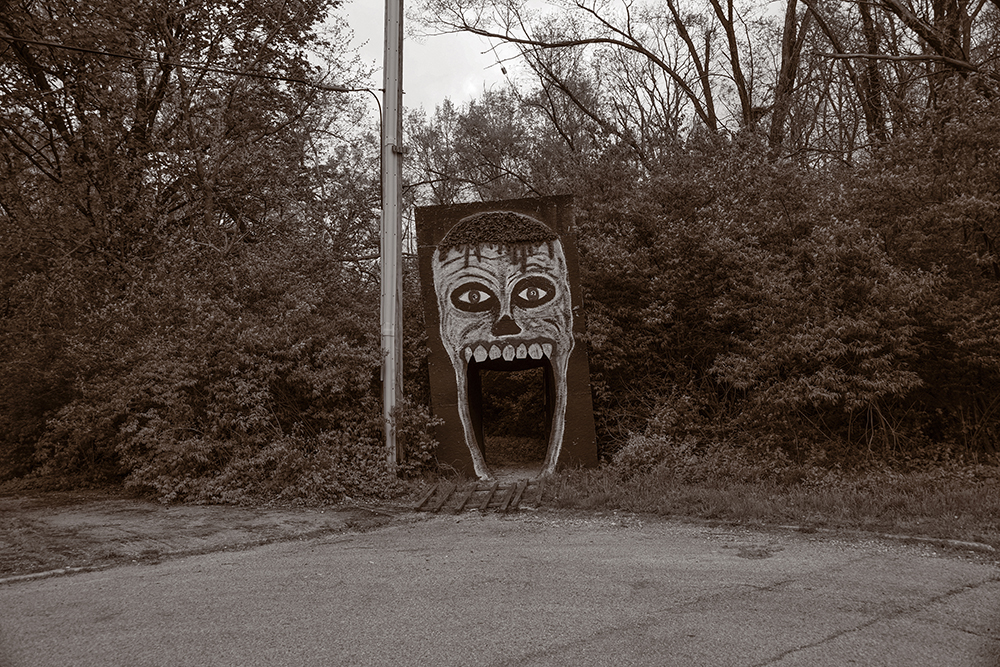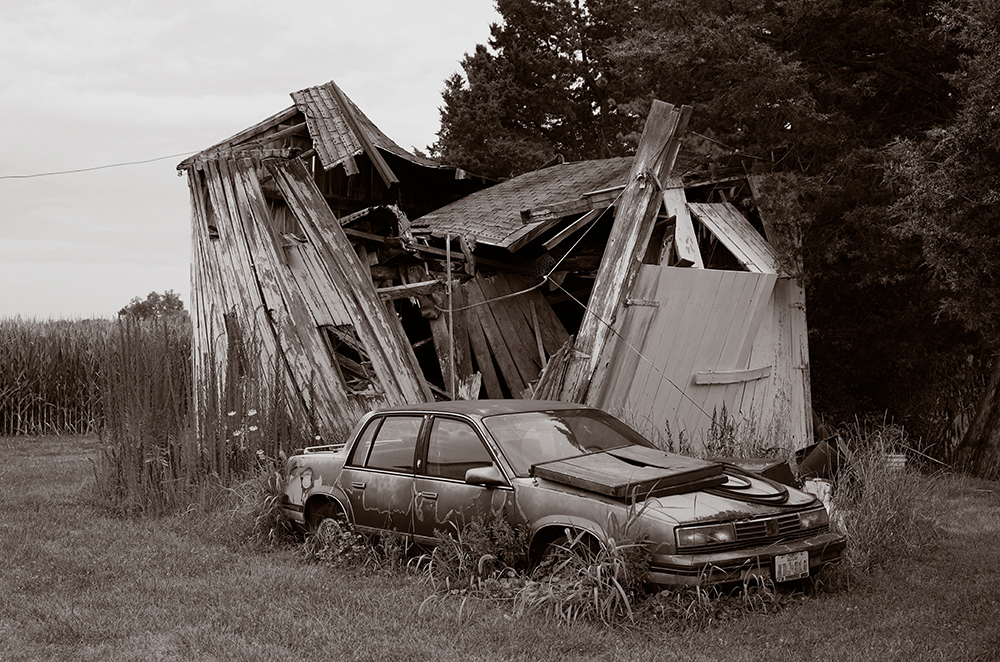Gary Beeber: Passages
“I have become obsessed with the passage of time, what things were and what they are now. I often think about my own mortality.”
Photographer Gary Beeber has knack for finding humor and pathos in the every day, especially in those places that have fallen into decline. He has an innate curiosity and the photographs in his series, Passages, reveal a sense of wonder and amusement about the deteriorating detritus of architecture and objects. He describes the beginnings of how he sees, “Influential in shaping how I see was the drawing class taught by Jack Potter, Drawing and Thinking, at SVA (New York City). He demanded we students see beyond the obvious and to be active interpreters of what we see. This dictate has been a major influence in my pursuit as a photographer. I engage with my world, led by my curiosity.”
Gary will have solo exhibition of his Sylvester Manor series coming up in August at Rhode Island Center for Photographic Arts, curated by Yorgos Efthymiades, that will travel to several venues.
Passages
When I grew up in Middle America life was good, but over time the big factories shut down and those jobs were gone forever. What was once a thriving community is now filled with abandoned places and broken dreams, my hometown has become the opioid capitol of America. When I returned many years later it was very different, yet familiar.
The “Passages” series is about the passage of time, what things were and what they are now. The subjects of this series are essentially found objects, each one a discovery for me.
I have often reflected on the brevity of life, perhaps my photographs are a series of self-portraits by proxy as I contemplate my own demise and life cycle.
Gary Beeber is an award-winning American photographer/filmmaker who has exhibited in galleries and museums throughout the United States and Europe. His films have screened at over 75 film festivals. Solo (photography) exhibitions include two at Generous Miracles Gallery (NYC), the Griffin Museum of Photography (2017), and Rhode Island Center for Photography (2020). Beeber’s work has also been included in juried exhibitions throughout the country. Among Fortune 500 companies who collect his work are Pfizer Pharmaceutical, Goldman Sachs and Chase Bank.
I am always drawn to subjects I find to be incongruous, and always like to experiment. As I’m taking pictures I think a lot about the passage of time and how things end up the way they are. What happened to the people who lived in these places and what were they experiencing? I’ve often been told that I see things that other people don’t pay attention to. The images I capture come to me subconsciously perhaps; they speak to me in a variety of ways, fulfilling an insatiable curiosity about the world and everything in it.
Through the viewfinder the world is in color, but I imagine what I see as monotone. I work with color as well, but feel that black and white gives my work a gravitas that can’t be achieved with color. Black and white is solid, timeless. I have studied the work of the great Parisian photographer Eugene Atget (1857-1927) and especially like his use of color (or non-color) that came from his printing process. It took me a long time to develop a similar palette, which I use with my own ideas.
As I photograph, I make adjustments with the composition and cropping. I also make changes based on how I foresee the printed image. I’ve used a lot of cameras over the years but have come to prefer digital because I like the quality and the immediate results. Perhaps this is because when I started getting serious about photography digital cameras didn’t exist. I used computers early on but they were primitive by today’s standards.
I like to come back to themes. I’ve been working on the “Passages” and “Sylvester Manor” series for several years. For me, it’s exciting to see how places and things change over time and sometimes disappear altogether. I prefer quiet places where I can spend time thinking about each subject without interruption, but sometimes that’s not possible. Some places I know about and some places I find by accident. I think I’m most successful with what I find by chance.
Posts on Lenscratch may not be reproduced without the permission of the Lenscratch staff and the photographer.
Recommended
-
Nathan Bolton in Conversation with Douglas BreaultJanuary 3rd, 2026
-
Andrew Lichtenstein: This Short Life: Photojournalism as Resistance and ConcernDecember 21st, 2025
-
Martin Stranka: All My StrangersDecember 14th, 2025
-
Interview with Maja Daniels: Gertrud, Natural Phenomena, and Alternative TimelinesNovember 16th, 2025








































































